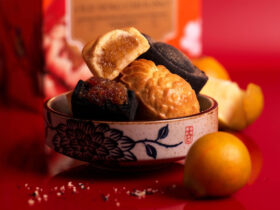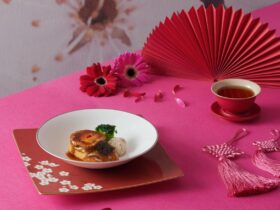
The flash is over-powering the rest of the photo. I recommend at least a compact digital camera that will allow you to adjust the flash power to help balance the light.

The photographer used a strong light from the background window and the camera’s flash from the front to balance it out. Compared to the previous image, the use of flash is more pleasing. Don’t forget to take multiple shots and adjust the power of the flash incrementally, and choose the best one.
Food photography seems to get be getting ever popular. Here are a few tips on how you can get it to look more appetising!
By Guinevere Sofer
Whether you enjoy taking pictures of food to share or to keep as a memento of some of the great restaurants you’ve been in, it’s always a good idea to take the best possible photos.
In this first in a series of three articles, we’ll be exploring lighting for food photography and share some handy tips and tricks.
Step 1: Get a table with access to light
My strategy is always to find an area in the restaurant that has the most light. This could be: 1) A dining area outside (if there is available daylight); 2) Inside, next to the window where daylight spills in; or 3) Tables under a spotlight.
The more lighting you can get, the more colours and highlights you can get on your food. But it’s always good to have some fill light in, with flash from your equipment. This brings the question of control.
Step 2: Control your flash setting with compact digital camera
We’ve seen it all before when we use our handphone’s flash: the glaring highlights which simply blast away any detail or texture of the food. To avoid that, you need to be able to control the flash.
That’s why, I always carry a compact digital camera. Even the most basic compact digital cameras have the ability to control the flash setting, which can reduce or increase the flash intensity to balance out the ambient lighting in Step 1.
Balance simply means that the flash should not overpower the other available light. [See example]. There is a setting on every camera which reduces or increases the intensity of the flash easily. This feature may not be easily available on phonecams.
Step 3: Take lots of variations
The final and surest way to take better pictures is to do what the pros do. Take about six to ten variations of the same scene, then delete the ones you don’t like.
In each shot, make sure you adjust the flash in small increments; the “sweet spot” is where the flash from the camera will balance in harmony with the surrounding lighting.
ADVERTISEMENTS









